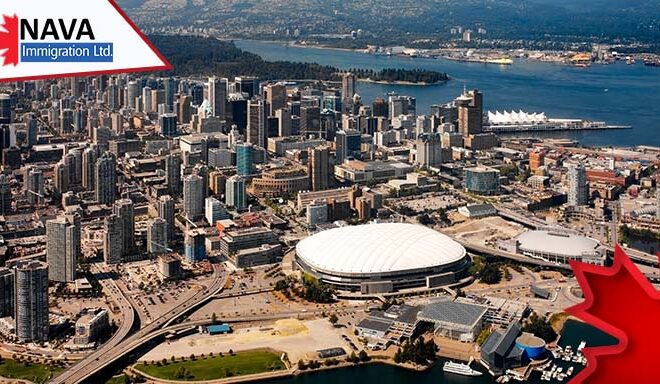Atlantic Immigration Program Offers A Faster Path To Canadian PR
The Atlantic Immigration Program offers a faster path to Canadian PR. The program is an immigration pathway for skilled workers who wish to settle in any of the provinces that make up Atlantic Canada:
- New Brunswick
- Newfoundland and Labrador
- Nova Scotia
- Prince Edward Island
The AIP is an employer-driver program. To be eligible, a foreign national needs a job offer from a designated/ recognized employer in Atlantic Canada.
Benefits Of The Atlantic Immigration Program
Compared against other Canadian immigrant pathways, the AIP offers several benefits for those who want to settle in any of the Atlantic Provinces.
- Applicants enjoy shorter processing times
- Applicants can legally work in Canada while pursuing their PR status
- Work permits do not require LMIA
- Applicants enjoy individualized settlement services
Shorter Processing Times
AIP is a popular immigrant pathway in the Atlantic provinces because it gives eligible applicants a route to work in Canada and attain permanent resident status simultaneously.
The current processing time for a candidate applying for permanent residency through AIP is eight months, which is shorter than for many other PR pathways.
LMIA-Exempt Work Permit
If an applicant wants to start working before being granted PR, they can apply for a temporary work permit. This work permit is LMIA-exempt.
To qualify for this work permit, an applicant should have:
- An employment offer from a designated employer
- A referral letter from the Atlantic province where they will be working
This permit is valid for two years and will only allow the candidates to work for the employer who has offered them the job. Being issued this work permit does not guarantee that the permanent resident application will be successful.
Individualized Settlement Services
Additionally, AIP strongly emphasizes helping applicants settle into their new provinces.
Employers need to help newcomers settle into the province by connecting them with a settlement agency that will help create a settlement plan. This implies that applicants have access to more individualized settlement advice, helping them integrate better into their new communities.
Who Is Eligible?
The Atlantic Immigration Program offers a faster path to Canadian PR. Each Atlantic province processes a number of applications annually based on local labor market demand. Applicants might reside inside or outside the nation and must meet the program’s eligibility requirements.
In addition to obtaining a job offer from a designated employer in Atlantic Canada, applicants should be either:
- A skilled worker
- A recent graduate of a post-secondary institution in Atlantic Canada
AIP Eligibility For Skilled Workers:
- Skilled workers are considered eligible for AIP if they have worked at least 1,560 hours within the last five years. That comes down to over 30 hours per week if they’ve worked for a year
- The work experience should be in a National Occupational Classification TEER category of 0, 1, 2, 3, or 4
AIP Eligibility For Recent Graduate:
International student graduates are considered eligible for AIP if:
- They have a credential from a recognized post-secondary institution in 1 of the 4 Atlantic Provinces, which took a minimum of two years of studies
- They were a full-time student for the entire time of studying
- They lived for a minimum of 16 months during the last two years before graduating
- They had legal status needed to work, study, or get training while in Canada
Other Criteria For AIP
Educational Requirements
Educational requirements vary depending on the NOC TEER of the applicant’s job offer:
| NOC TEER | Education Requirements |
| 0 or 1 | One-year Canadian post-secondary educational credential or higher, or the equivalent from outside Canada |
| 2, 3, or 4 | Canadian high school diploma, or the equivalent from outside Canada |
Note: All degrees outside Canada require an ECA, i.e., educational credential assessment. The ECA report should be less than five years old from the date IRCC obtains the application.
Language Requirements
The applicant should demonstrate a certain level of language proficiency based on the NOC TEER of their employment offer:
| NOC TEER | Minimum Canadian Language Benchmark (CLB) |
| 0, 1, 2, or 3 | CLB 5 |
| 4 | CLB 4 |
The language test results must be less than two years old from the date of application.
Settlement Funds
Applicants need to prove that they have enough money to support themselves and their families in Canada. The amount of money required depends on the size of the family.
| Number Of Family Members | Funds Required |
| 1 | $3,672 |
| 2 | $4,572 |
| 3 | $5,620 |
| 4 | $6,824 |
| 5 | $7,740 |
| 6 | $8,729 |
| 7 | $9,718 |
| If more than 7, add this amount for every additional family member | $989 |
If someone already resides and works in Canada with a valid work permit, they do not need to show proof of funds.
What Is The Difference Between The AIP and Provincial Nominee Programs?
The Atlantic Immigration Program offers a faster path to Canadian PR. On the other hand, the Provincial Nominee Program allows provinces in Canada to nominate individuals who wish to immigrate to Canada and who are interested in settling in that province.
There are around 80 provincial immigration streams, and unlike AIP, many streams do not require an applicant to have a job offer or Canadian work or study experience to obtain a nomination.
PNPs are generally a two-step process to permanent residency. An applicant should first obtain a provincial nomination and then apply to the federal government for permanent residence.
So, for this reason, and because of generally longer processing times, PNP application processes might take more time than AIP applications regarding PR status.
| Atlantic Immigration Program | Provincial Nominee Program | |
| Valid For | New Brunswick, Newfoundland and Labrador, Prince Edward Island, and Nova Scotia | All provinces except Quebec and Nunavut |
| Need A Job Offer | Yes, from a designated employer | Not necessary, depending on the PNP stream |
| Pathway To PR | One-step process. Eligible applicants can directly apply for PR | Two-step process. Applicants should first be nominated by the province, then invited to apply to the federal government |
| Processing Time Until PR | 8 months | Varies according to province and stream. Approximate time for enhanced nominations: 8-12 months Approximate time for base nominations: 1224 months |
| Settlement Funds | Required, but significantly lesser than proof of funds needed for Express Entry | Not all PNP streams require settlement funds. When needed, Express Entry minimum proof of funds is significantly higher than AIP settlement funds needed |
| Settlement Support | AIP requires a settlement plan to help applicants and their families integrate better | Most PNPs do not require a settlement plan |
Processing times are not guaranteed. Expected processing times can fluctuate based on application demand and can vary significantly among individual applications.
How Can I Apply For The AIP?
If you meet the above eligibility criteria, you need to get a job offer from a designated employer in any of the Atlantic Provinces. The job offer must meet certain requirements, including being:
- Full-time
- For NOC TEER 0, 1, 2, or 3: valid for a minimum of one year from the time you become a permanent resident
- For NOC TEER 4: permanent, implying that the offer has no set end date
The next step would be to start collecting the necessary documents. This includes:
- Your language tests
- An ECA report, if you studied outside Canada
- Proof of funds
After this, you can work with a settlement agency to obtain a settlement plan. These are free and can be done whether you are already in Canada or outside the nation. Your designated employer might be able to help you find a settlement agency.
Next, you require a Certificate of Endorsement, which your employer needs to apply for.
You can submit your permanent residence application after your employer confirms that the province has endorsed your offer.
After completing the steps above, you can apply for your PR online. You will need to fill out some forms, upload all the documents and photo scans, pay fees, and, in most cases, submit your biometrics.
What Is A Designated Employer?
The Atlantic Immigration Program offers a faster path to Canadian PR. But who is a designated employer?
Well, the provincial government approves certain employers in Atlantic Canada so they can hire foreign workers.
Employers should meet certain criteria, such as being in good standing and complying with employment standards and health and safety legislation.
In addition, companies have also been in continuous, active operation under the same management for a minimum of two years in one of the Atlantic provinces or can show continuous, active operation in another location with approval from the province.
There is no additional cost to becoming a designated employer.
Demand For AIP
The last few years have seen a rise in the number of newcomers choosing to settle in Atlantic Canada.
According to the Atlantic Economic Council’s Atlantic Immigration Tracker, immigration reached a record 32,000 in the region in 2023.
A senior researcher with the council, Patrick Brannon, stated that for the first time, the three Maritime provinces are attracting immigrants in proportion to their share of Canada’s population.
With the Atlantic provinces having become increasingly popular with newcomers, some provinces have paused the program to meet changing labor market needs.
On September 18, New Brunswick declared that it would no longer accept new endorsement applications under the program for the remainder of the year, as the allocation for 2024 had been reached. The program is expected to reopen in the province in early 2025.
In Nova Scotia, there is an indefinite pause on immigration applications from food service supervisors (NOC 62020).
If you seek information on how to begin your Canada immigration application process, you can talk to our NavaImmigration experts at 1800-918-8490. You can drop us an email at [email protected].





